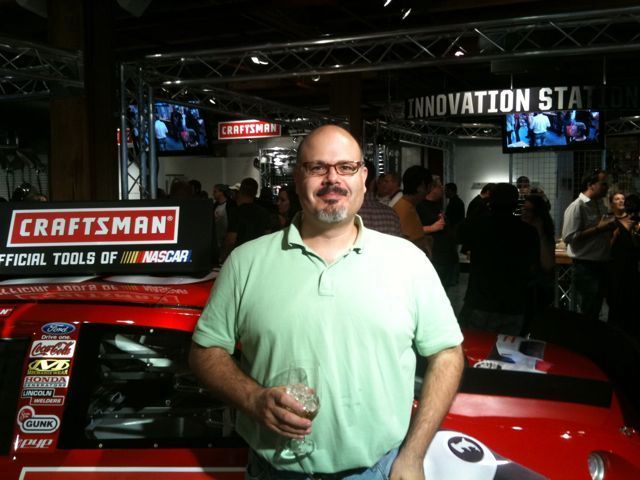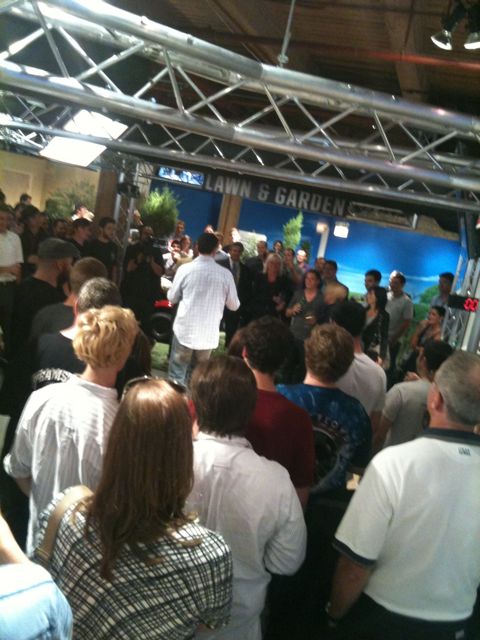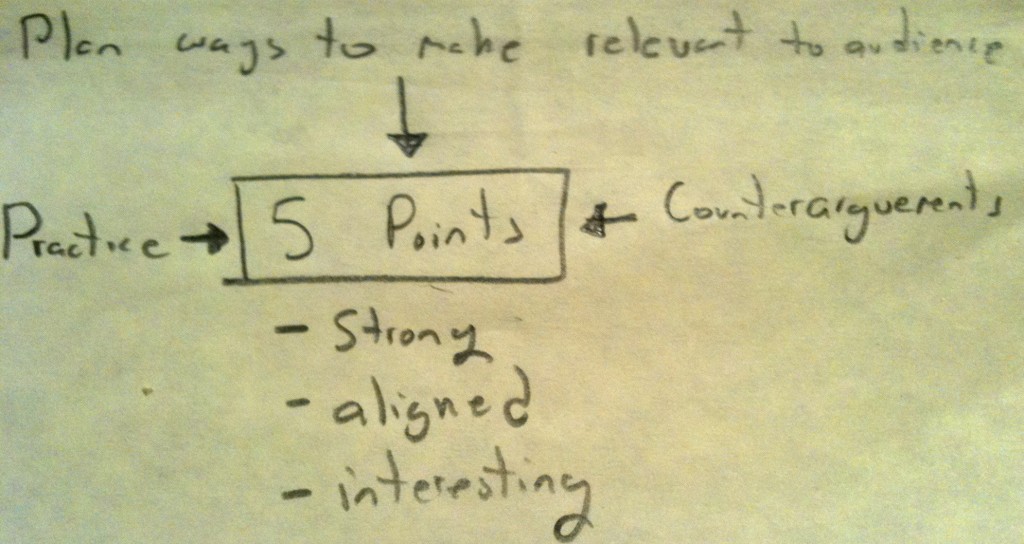Craftsman open a studio in Chicago
Archive for August, 2010
Craftsman studio in Chicago
Saturday, August 28th, 2010Advertising Agency of the Future: Part II
Friday, August 27th, 2010I think the Ad agency of the future will be small and nimble. I don’t think it will be massively different from the way agencies are organized today. But it will be massively different in terms of how it works, its culture.
- The culture will be more a community that is dynamic and learns and adapts and re-organizes based on the problem/opportunity it is facing.
- All of the people in the company will be able to create content and manage campaigns. They will all have at least basic training and skills in all the facets of digital production. The tools are just too easy not to.
- All the information will be in the cloud and available to anyone in the organization to access at any time.
- All the different metrics for all of the accounts will also be available at any time to anyone in the organization. This includes social media monitoring.
The main difference from today will be the tools that facilitate all of the above new behaviors. You could say the scaffolding that supports this different culture.
- Wikis. All pitches and SOWs will be built on and through wikis.
- Blogs – Every account will have a blog. Every customer segment will have a blog. These will be accessed/and edited by both the agency and the client.
- DataMart -All the account information, customer information, and project information will be available to everyone.
- A powerful search functionality will stretch across all of the above and let people find information.
- Just as we use Google analytics, Omniture, and now Radian6 to comb through massive amount of information to find out what is the most recent, the most accessed, the most commented on, the most “liked” content – – the agency of the future will do the same will all of the above.
See also: Agency of the Future
The A – B = C way to your next promotion
Friday, August 27th, 2010A = The skills and knowledge needed to do the kind of work that your next job entails
B = The skills and knowledge that you have
C = The skills and knowledge you have to learn or get someone to teach you, or figure out some way to get someone else to do for you in your new promotion. These skills and knowledge should be made into a list that you need to check off one by one.
References
What Color Is Your Parachute. I adapted this from his chapter on how to start your own business. It was recently recommended to me to re-read “The Parachute” book once a year, so I am doing so now. Additionally, it is useful to give me practical ideas/topics and to help focus my discussions with the people I manage and mentor. I highly recommend it.
See also: How to get promoted to Senior User Experience Designer
Agency of the Future
Thursday, August 26th, 2010Been doing some thinking about what the agency of the Future Looks like.
I found the R/GA videos to be great.
What we do (11:44)
Our Model (4:18) The core of their concept
Our Vision (8:12)
If you are thinking of making a agency of your own, check out the way they present and show who they are. The model they present focuses on showing how they solve problem of integration. The presenters pass the “Yes, I’d love to have a beer with them” test.
I am also reading Jaffe Juice who I have recently stumbled upon and wrote a interesting article called The Agency of the Future.
And another great post on “who says the future needs an advertising agency?”
Talking about Managing
Friday, August 20th, 2010Sometimes as managers and directors we don’t talk about management. We seem to talk about everything expect the core of our responsibility. A great blog I came across recently is by Bob Sutton – Work That Matters, it focuses nicely on management. Let the discussions begin.
References
Fred Leis is my manager who said “Lets talk about more about management.”
Sundar Chandrasekaran, a Sears employee now, a recent Stanford Grad who was a student of Bob Sutton and was telling me about him in our afternoon meeting. Thanks Sundar!!
Advertising lags Politics by 10 years
Friday, August 20th, 2010Politics Over the Last 30 years
Late 80s -90s in politics – Big national databases that segmented and targeted and identified “influentials”
90s -2000s in politics – rise of talk-radio hosts
Late 2000s in politics – neighborhood by neighborhood organizing the rise of niche micro-movements (donations, volunteers, etc)
Advertising Over the last 30 years – Basically take politics and lag by a decade
90-2000s – Big national databases that segmented and targeted and identified “influentials”
Late 2000s – bloggers who command attention like the talk-radio hosts and guerrilla advertising
2010 – The rise of twitter, niche advertising, and local and “badged” communities
References
From a late night conversation with Michael Leis on ways to explain advertising/social media
Confessions of a Public Speaker by Berkun
Thursday, August 19th, 2010Connectile Dysfunction
Wednesday, August 18th, 2010Connectile Dysfunction by Mark Baskinger
A great read in UX Magazine. Almost a must read if you are looking into how interaction design can feed into industrial design.
Key concepts
- Design for Impact and Design for Experience
- Refrigerator- design of an organizational system for cold storage
- Boomer and Elderly similarities and differences
- Co-design
- Steering Wheels as insight for stove knobs (unified product forms and interactions)
- Strike Zones
Big Themes
- Integrating interaction into form
- Situated interaction in environmental context
- Express through physical/visual form
- Narrating the interaction
Online Profiles & the Movie “Salt”
Monday, August 2nd, 2010The movie Salt gives us insight into deep culture’s conception of how many profiles one person can have.
Observation: In the movie Salt and in other spy movies we have seen a move from a single profile of a spy (James Bond) to a multiple profile spy (Salt) in which Salt is a spy, a counter-spy, and a counter-counter-spy. People nowadays seem to have no problem following this plot line and character (the wilderness of mirrors.) This is addition to her 2 “cover” profiles which would exist in each national culture.
Observation: In high schools now kids are no longer exclusively nerds, jocks, stoners, etc. Each of these can be short-lived roles even within a single day.
Observation: Facebook and Linked in are used by the same people in very different ways.
The Question: How many different profiles can a person have? And, how many different profiles of 1 person can other people keep track of?
Answer: I think the answer is 3 to 5. We see Facebook, LinkedIn, and usually peoples corporate in-company profile, and their personal profile (usually mediated through the channels of email/phone-calls/text messages. From the movie Salt we see 5. It is without a doubt more than 1.
References
Chris Messina talked about people having 5 profiles in NY at the Overlap event.
Why spies, counter-spies, and counter-counter spies are so popular right now.
The Official Site for the Movie Salt
Comments on high-school groups (I’m still looking for my reference)
See Also


